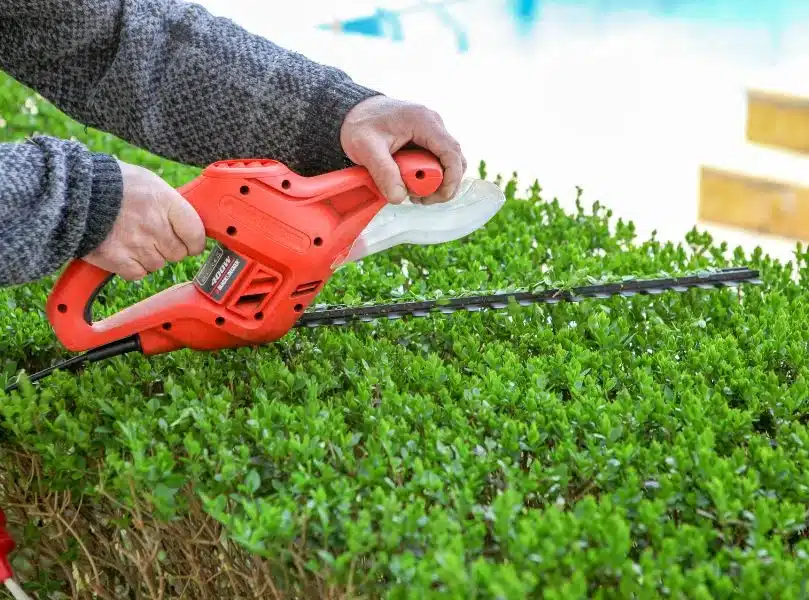
Spring Shrub Trimming: Your Early-Season Pruning Guide
As the chill of winter melts away and signs of life return to your landscape, it’s the perfect time to refresh your garden with spring shrub trimming. Early-season pruning improves your yard’s appearance and encourages healthy plant growth throughout the year. Whether you’re a home gardening enthusiast or a first-time homeowner, learning the basics of spring pruning can make a big difference in your landscape’s vitality and curb appeal.
In this blog, we’ll explore everything you need to know about pruning shrubs in spring—why it’s essential, when and how to do it properly, and which tools and techniques work best. Let’s dig in!
Why Spring Shrub Trimming Matters
Spring is a crucial time for your garden. As plants awaken from dormancy, trimming gives them the best start for strong growth. Here’s why spring bush trimming is essential:
1. Encourages Healthy Growth
Removing dead, damaged, or diseased branches allows your shrubs to focus energy on new, healthy shoots. This improves airflow and reduces the risk of pests and fungal infections.
2. Shapes Your Shrubs
Spring is ideal for shaping shrubs before they begin active growth. Regular pruning maintains the natural form of the plant and prevents it from becoming overgrown or unruly.
3. Promotes More Blooms
Certain flowering shrubs respond well to spring pruning, leading to a more vibrant bloom season. Pruning early in spring is especially beneficial for shrubs that flower on new wood.
When Is the Best Time for Spring Pruning?
Timing is everything. The ideal window for how to prune shrubs in spring typically begins in late winter and runs through early spring—before the plant starts producing new leaves or flower buds.
Flowering Shrubs
- Shrubs that bloom on new wood (like hydrangeas and butterfly bushes): Prune in early spring.
- Shrubs that bloom on old wood (like lilacs and azaleas): Wait until just after they bloom to prune.
Non-Flowering Shrubs
For evergreen or foliage-focused shrubs, early spring pruning keeps the plant compact and manageable, while also allowing for a full growing season to recover.
Tools You’ll Need
Having the right tools makes spring shrub trimming both easier and more effective. Stock your gardening shed with these essentials:
- Hand pruners – For small branches under ¾ inch.
- Loppers – For medium branches up to 1½ inches.
- Pruning saw – For larger, woody stems.
- Gloves and safety goggles – To protect your hands and eyes from thorns and debris.
- Disinfectant spray or wipes – To clean tools between shrubs and prevent disease spread.
How to Prune Shrubs in Spring: Step-by-Step
Here’s a general guide to follow when pruning shrubs in spring:
1. Inspect the Shrub
Look for dead, damaged, or diseased branches. These should be removed first to stop the spread of decay and allow light and air into the plant’s interior.
2. Remove Suckers and Water Sprouts
These fast-growing shoots often emerge from the shrub’s base or interior. They divert energy from the main plant and should be pruned to the base.
3. Thin Out Crowded Branches
Cut back overlapping branches to improve airflow and light penetration. This reduces the risk of mildew and enhances overall growth.
4. Shape and Contour
Once the shrub is cleaned up, begin shaping it. Follow the plant’s natural form, making angled cuts just above a healthy bud or side branch.
5. Clean Your Tools Between Cuts
Prevent cross-contamination by wiping down your blades between different shrubs, especially if you’re removing diseased limbs.
Common Shrubs That Benefit from Spring Trimming
Knowing which plants to prune in spring ensures you don’t accidentally remove this season’s blooms. Here are common shrubs suited to spring bush trimming:
- Hydrangeas (certain types)
- Butterfly Bush (Buddleia)
- Rose of Sharon
- Crape Myrtle
- Barberry
- Boxwood
- Spirea
Always double-check the pruning requirements for your specific shrub type, as timing can vary.
Spring Trimming Do’s and Don’ts
Do:
- Use sharp, clean tools
- Prune on a dry day to prevent disease spread
- Step back occasionally to assess shape
- Mulch after pruning to retain moisture
Don’t:
- Over-prune—this stresses the plant
- Prune spring bloomers before they flower
- Leave ragged cuts—these heal poorly
- Forget to hydrate and fertilize post-trim
Need Help? Call a Professional Tree Trimming Service
While homeowners can manage light spring shrub trimming, more extensive jobs may require the expertise of a professional. If your shrubs are large, overgrown, or near power lines, it’s safer and more effective to hire a tree trimming service.
Experts know how to prune safely, boost plant health, and avoid common mistakes that can damage your landscape. Plus, they’ll clean up the mess, saving you time and effort.
Getting Ready for the Next Season
Spring pruning sets the stage for a lush and vibrant summer garden. But don’t stop there—maintain a seasonal care routine. After trimming:
- Add compost or slow-release fertilizer.
- Water deeply to support new growth.
- Monitor for pests or diseases as the season progresses.
And don’t forget, when the season rolls around again, you can count on Holiday tree removal services to keep your yard clean and clutter-free.
Spring shrub trimming is more than just a cosmetic fix—it’s a vital part of seasonal plant care. With a little time and attention, your shrubs can thrive all year long. By following proper spring pruning practices and knowing how to prune shrubs in spring, you’ll enjoy a healthier, more attractive landscape.
Whether you’re maintaining a flower-filled garden or a well-manicured yard, trimming your shrubs in spring ensures that nature puts on its best show—and you’ll be ready to enjoy every bloom.
Need help trimming or maintaining your trees and shrubs? Contact your local experts for a reliable and affordable tree trimming service today.

